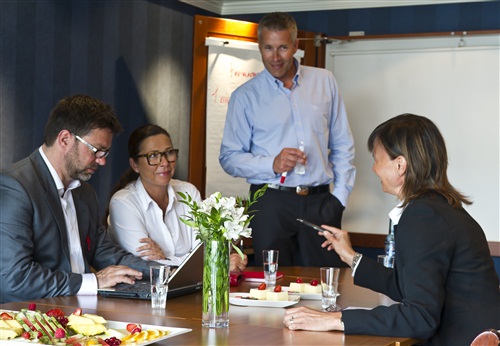 The four Nordic countries that have consistently held the highest positions in previous editions of the Global Gender Gap Index continue to hold privileged positions. Iceland (1) holds the top spot for the fifth consecutive year and therefore continues to be the country with the narrowest gender gap in the world. Iceland’s overall score moves up due to improvements in the Economic Participation and Opportunity and the Political Empowerment subindexes. Finland (2) continues to hold the second position despite slight losses in its overall score because of a decrease of its Economic Participation and Opportunity score. Norway (3) follows next, with a small increase in its overall score. Sweden (4) continues to hold the fourth position.
The four Nordic countries that have consistently held the highest positions in previous editions of the Global Gender Gap Index continue to hold privileged positions. Iceland (1) holds the top spot for the fifth consecutive year and therefore continues to be the country with the narrowest gender gap in the world. Iceland’s overall score moves up due to improvements in the Economic Participation and Opportunity and the Political Empowerment subindexes. Finland (2) continues to hold the second position despite slight losses in its overall score because of a decrease of its Economic Participation and Opportunity score. Norway (3) follows next, with a small increase in its overall score. Sweden (4) continues to hold the fourth position.
Although no country has yet achieved gender equality, all of the Nordic countries, with the exception of Denmak have closed over 80% of the gender gap and thus serve as models and useful benchmarks for international comparison. While many global indexes tend to be tied to income levels, thus providing an advantage to the high income Nordic economies, the Global Gender Gap Index is disassociated from the income and resource level of an economy and instead seeks to measure how equitably the available income, resources and opportunities are distributed between women and men. Despite this feature of the Index, these countries emerge as top performers and true leaders on gender equality.
All Nordic countries reached 99-100% literacy for both sexes several decades ago and display gender parity at both primary-and secondary-level of education. At the tertiary level, in addition to very high levels of enrolment for both women and men, the gender gap has been reversed and women now make up the majority of the high-skilled workforce. In Norway, Sweden and Iceland there are over 1.5 women for every man enrolled in tertiary education, and in Finland (1.23) and Denmark (1.45) women also make up the majority of those in tertiary education.
While many developed economies have succeeded in closing the gender gap in education, few have succeeded in maximizing the returns from this investment. The Nordic countries are leaders in this area too–all five countries feature in the top 25 of the Economic Participation and Opportunity subindex. This occurs due to a combination of factors: the labour force participation rates for women are among the highest in the world; salary gaps between women and men are among the lowest in the world, although not non-existent; and women have abundant opportunities to rise to positions of leadership. These patterns vary across the Nordic countries, but, on the whole, these economies have made it possible for parents to combine work and family, resulting in high female employment, more shared participation in childcare, more equitable distribution of labour at home, better work-life balance for both women and men and in some cases a boost to declining fertility rates. Policies in some of these countries include mandatory paternal leave in combination with maternity leave, generous federally mandated parental leave benefits provided by a combination of social insurance funds and employers, tax incentives, and post-maternity re-entry programmes. Together these policies have also led to relatively higher and rising birth rates occurring simultaneously with high female workforce participation in the Nordic countries, compared to other OECD economies such as Korea, Japan, Germany, Austria, Italy and Spain, where both birth rates and participation are lower. The Nordic experience points to fewer problems with ageing in the future, as well as higher labour activity and a more robust economy.
Full rapport:
www3.weforum.org/docs/WEF_GenderGap_Report_2013.pdf
Photo:
CH/Visitnorway.com



 EUR 4.2515 zł
EUR 4.2515 zł USD 3.6108 zł
USD 3.6108 zł DKK 0.5698 zł
DKK 0.5698 zł SEK 0.378 zł
SEK 0.378 zł NOK 0.3582 zł
NOK 0.3582 zł